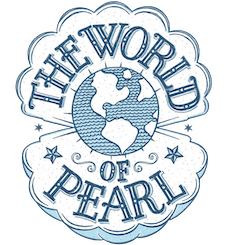
Mother of pearl carvings from Palestine came to the U.S. via the World’s Fair in 1853.
In 1852 New Yorkers learned that a World’s Fair, also known as the Exhibit of the Industry of All Nations, would be coming to what is now Bryant Park in New York City after a showcase in London the year before. When it launched May 2, 1853, the fair was a huge success. It lasted sixteen months long and was visited by over 1.1 million people.
One noted exhibition was by Elisha Otis who showcased an elevator with a safety device which served as a back up should the elevator’s hoisting rope break. Scary thought but certainly one on the forefront of many people’s minds. Up until this point, elevators were mainly used to transport goods, coal and occasionally animals. This safety device was a monumental achievement and led to the very first public passenger elevator installed in the E.V. Haughwout building, a five-story, 79-foot tall, commercial loft building in the SoHo neighborhood of Manhattan,New York City just a few years later.
Another noted exhibit at this 1853 World’s Fair? Mother of Pearl carvings from Palestine, displayed by brothers Giries and Ibrahim Mansur. This marked the first time that the famous Palestinian craft of carving mother of pearl was introduced in America. Although, one might argue, that many years prior, native Americans were carving mussel shells to use as both tools and ornaments. There was nothing to compare to the art and skill in these amazing mother of pearl carvings. If you recall, America, at this point was not even involved in the mother of pearl button industry. We did not open our button factories until closer to the turn of the 20th century.
The origin of mother of pearl carvings goes way back to the Bronze Age of the Shang Dynasty of China (ca. 1600-1050 BC). At least, we see some evidence of this technique in surviving artifacts. Mother of pearl carvings also flourished in China under the Ming emperors (1368-1644 AD).

In Egypt, there is evidence of the use of mother of pearl carving from the tomb of King Tutankhamen (ruled ca. 1332 BC – 1323 BC) but the art did not truly flourish until much later. In fact, mother of pearl carvings really gained monumental attention (at least in our modern day and age) when religious artifacts started to become both popular and valuable.
Franciscan monks came from Damascus to the Bethlehem area around the 15th century and brought with them the skill of carving mother of pearl. Mother of pearl carving was a perfect art for the craftspeople in Bethlehem for two reasons. The nearby Red Sea provided a great source of shells for work with mother of pearl. Also, all of the pilgrims that traveled to Bethlehem wanted to leave with a souvenir or token of their religious journey. Mother of pearl carvings proved to be unique and beautiful keepsakes. The creation of these souvenirs generated much local work and income for both men and women.
- © 2013 SmugMug, Inc.
To this day, mother of pearl carvings are a revered art and large industry in Bethlehem. Many artisans have replaced the old tools with new electric carving tools but, even still, this type of art requires great skill. In fact, there are two different types of art coming out of Bethlehem even today. The first are items for the souvenir industry. They include various knickknacks featuring mother of pearl inlay with wood and accents including crosses, rosaries, boxes, bible covers and small carvings. There is also a group of artists that focus on large scale carvings such as the ones found in the vaults of the Vatican and in museums all over the world.

The above depiction of the Last Supper is made from using mother of pearl carvings and attaching them to a board.
We are excited to try our hand at using mother of pearl carving as an enhancement to our cultured pearl jewelry. See our newest carved mother of pearl necklace and earrings, launched in 2013, using mother of pearl carved in China.
I am a modern day treasure hunter who travels the world for gorgeous pearls and amazing adventures. I own a pearl jewelry and jewelry repair business, ThePearlGirls.com, with a cute retail store in Athens, GA. I also have a Pearl Travel business and travel blog at TheWorldofPearl.com.






